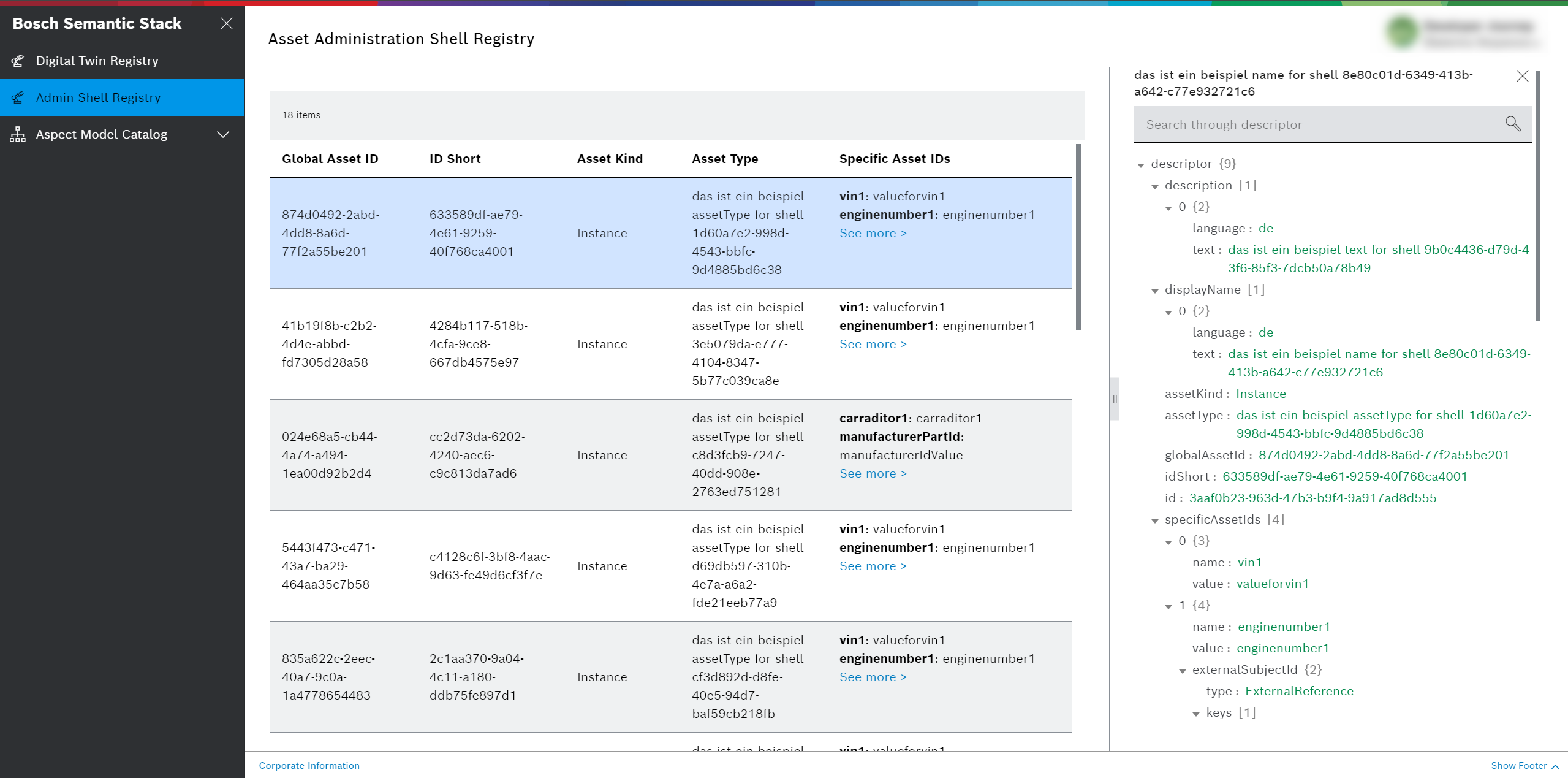Asset Administration Shell (AAS)
The Asset Administration Shell (AAS) is a digital representation of a physical asset.
See also Digital twins and Twins.
One AAS can hold of a number of Submodels, in which all the information and functionalities of a given asset — including its features, characteristics, properties, statuses, parameters, measurement data, and capabilities — can be described.
The AAS provides interoperability and seamless communication between stakeholders, enabling the integration of heterogeneous systems.
How AAS is related to ESMF and SAMM
AAS can be used in conjunction with the Eclipse Semantic Modeling Framework (ESMF), a toolset built around the Semantic Aspect Meta Model (SAMM) specification
, to enhance the semantic interoperability and richness of information exchange within the industrial ecosystem.
Both AAS and ESMF are among the prominent projects under the Eclipse Digital Twin Top-Level Project — a collaborative initiative at the Eclipse Foundation that aims to develop reference implementations for activities driven by the Industrial Digital Twin Association
. By doing so, the Eclipse Digital Twin project promotes the adoption of solutions, prototypes, and supporting software for digital twin information sharing and exchange.
From Aspect Models based on SAMM to Submodel Templates for AAS
Aspect Models based on SAMM can be used as semantic descriptions for AAS Submodel Templates.
Such Aspect Models can be created and maintained both text-based or graphically with the Aspect Model Editor. See also the Aspect Model Editor documentation.
From a given Aspect Model, you can then automatically generate the corresponding Submodel Template for your AAS. This is possible, for example, with any of the following open-source tools:
-
AASX Package Explorer
-
ESMF SDK
-
SAMM CLI
-
Aspect Model Editor
By leveraging the capabilities of ESMF and SAMM, developers can enrich AAS Submodels with semantic information that defines the structure and semantics of assets, including their characteristics, behaviors, and relationships.
Furthermore, ESMF and SAMM can help to ensure semantic interoperability between different AAS instances and industrial systems by defining common ontologies, vocabularies, and mappings between data representations.
